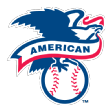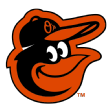In the cold nights of winter, I often like to play a game called If I’d Told You X Before The Season. For example:
If I’d told you before the season Max Muncy would play 140 games for the Dodgers, would you have figured the Dodgers were terrible (what strange disasters would be required to move Max Muncy that far up the depth chart?) or great (because they’d somehow stumbled onto another unexpected overachiever)? This game works not just because our imaginations are generally too limited to imagine Max Muncy, of all people, crawling out of the pits, and the Dodgers, of all teams, somehow not dominating; but because they’re too limited to further imagine all the other weird unimaginables bumping into it: Muncy not just playing but being the Dodgers’ best hitter; Muncy in the Home Run Derby; Muncy batting third or fourth in the lineup; Muncy drawing the fourth-highest walk rate in the sport; Muncy a superstar.
It’s not winter and it’s not cold, but let’s play this game.
 If I’d told you before the season Juan Soto would outhit Bryce Harper …
If I’d told you before the season Juan Soto would outhit Bryce Harper …
You’d think Harper had collapsed. You’d probably guess he started slow, went 3-for-16 in the first four games of the season, then broke his shoulder running into a wall. He could only lose a race against You Mean Juan Soto From Class A? on a technicality.
Soto was a fantastic prospect and his eventual success was widely predicted. Just not this sort of success, and not now. Soto is 19 and has a .295/.406/.516 line. That’s slightly better than he hit last year, at 18, a season he split between the Nationals’ complex-league team (Rookie ball) and Hagerstown (Class A) — something like 1,500 pitchers further down the world rankings than the guys he’s facing now. To put that line in perspective requires a Fun Fact:
In my lifetime, there have been only five other players who had an OBP higher than .400 in at least 450 plate appearances in their age-19 or age-20 or age-21 OR AGE-22 seasons. That those players are Mike Trout, Albert Pujols, Alex Rodriguez, Rickey Henderson and Harper seems almost beside the point.
Harper has been pretty good!
 If I’d told you before the season the teams with the six best offenses in the American League would also have the six best pitching staffs …
If I’d told you before the season the teams with the six best offenses in the American League would also have the six best pitching staffs …
You expected this. The division between The Six Or Seven Superteams and The Dozen Or So Tanking Teams had been identified well before the season began, and if the National League subverted our expectations — the Nationals won’t make the playoffs, and it’s still even possible the Dodgers won’t, either — the American League didn’t. As it stands now, the league is on pace to have one team (the Angels) finish between 75 and 89 wins, while as many as four could win at least 99. But the best measure of the desolate middle class is the fact in bold at the top of this paragraph.
Baseball isn’t even like football or basketball, where good defense can create more scoring — there is no overlap between the offensive and defensive parts of the game. Yet the American League has sorted itself almost as cleanly as, say, the majors and the minors have sorted themselves. The 30 best offenses in the world are in the majors. The 30 best pitching staffs are, too. But it’s shocking to see a league divide itself so cleanly.
But, wait — six? I must have said four, right? The Astros, Indians, Yankees and Red Sox were the four teams we expected in the top six. The A’s and the Rays weren’t. They probably weren’t even the teams that they expected. But there they are: The A’s have outhit (by OPS+) the Yankees. The Rays and the A’s outpitched — well, they’re actually slightly behind the other four, by ERA+, but they’re right there with them, by a huge margin ahead of the seventh-best Angels. This divide between the first and second division did as much to subvert our expectations as confirm them.
 If I’d told you before the season Jacob deGrom would go 10-9 …
If I’d told you before the season Jacob deGrom would go 10-9 …
To me, his personal record — which inched up to a not-quite-weird-enough-to-be-fun winning mark by the end — was always a distraction. We know that pitcher records can get weird. Yes, OK, it is fun to note that deGrom has a lower ERA in losses than his teammate Noah Syndergaard has in wins. It is fun to note that deGrom has the sixth-lowest ERA in the majors in his wins, the third lowest in his no-decisions and the lowest in his losses. But the rules for who gets a win are so odd as to sometimes seem irrelevant.
The far, far more interesting thing, to me, was always the Mets’ record in his starts. They had, by ERA, the sixth-best pitching season since mounds were lowered in 1969. They had a pitcher who was worth, by WAR, almost a third of a win every game; who, if you could somehow clone four of him and put five of him on a normal team, would lead a replacement-level team — a team of journeyman Triple-A scrubs — to (if my math is right) something like a 96-win season. And with this pitcher, the Mets went 14-18. The Elias Sports Bureau found us 40 starting pitchers since 1980 whose teams went 14-18 in their starts; the lowest ERA, before deGrom, was 3.07, by Hiroki Kuroda with the Dodgers in 2011. The median ERA was 4.15, and the 2012 Toronto Blue Jays managed to go 14-18 while Ricky Romero was allowing a 5.77 ERA in 2012. Meanwhile, deGrom finishes with a 1.70 ERA, the sixth lowest since Bob Gibson.
OK, last one. In 217 innings, deGrom allowed 48 runs, seven of them unearned. In those same games, his bullpen allowed 56 runs, in 62 innings.
So if I’d told you Jacob deGrom would go 10-9, you’d probably have said, huh, not going to be a great year for the Mets I guess. And you’d have been right, but probably for the wrong reasons.
If I’d told you before the season Joey Wendle and Max Muncy would be (arguably) the season’s two biggest overachievers …
Last winter, the Rays traded a player to be named for Wendle. He had spent almost all of the 2017 season in Triple-A, already 27 years old. The Tampa Bay Times’ baseball blog spent only 98 words on the trade, noting, among other things, that Wendle had an option remaining — which meant the Rays could send him to Triple-A. Arguably the most notable thing about Wendle at that point: He could be effortlessly sent to Triple-A.
The Dodgers signed Muncy to a minor league deal in April 2017, and it was even less newsworthy. The L.A. Times announced it with 41 words, noting Muncy was a 26-year-old utility player with a .195 career average.
Wendle began this season on the Rays’ bench but ends it with more WAR than any other Rays hitter. He will likely lead all AL rookies in WAR. Muncy is tied (with Clayton Kershaw!) for the second-highest WAR on the Dodgers. These things are interesting enough. Huge, impact acquisitions made in almost total, apathetic obscurity.
But if I’d told you before the season these two players would be (arguably) the two biggest overachievers in the game, you’d mostly wonder what voodoo curse had struck the A’s, the team that had let both of them go for practically nothing. (For Wendle, they ended up with a minor league catcher who already had been demoted from high-A to Class A.) In the 12 months before this season started, the A’s had let go of two breakout stars making the league minimum. Curses!
And of the three teams involved, it’s the A’s who are having the great season.
 If I’d told you before the season one team would have the least clutch offense in my lifetime, and another would have the second-most clutch offense in my lifetime …
If I’d told you before the season one team would have the least clutch offense in my lifetime, and another would have the second-most clutch offense in my lifetime …
Here’s one measure of team clutchness: OPS in high-leverage situations, compared to OPS in medium- and low-leverage situations. By this measure, the 2018 season has seen the second-clutchest offense of my lifetime. And it also has seen the least clutch offense in my lifetime.
But the clutch team — the Mariners — isn’t going to make the playoffs, and the least clutch one — the Dodgers — most likely will.
(Clutchness stats are so weird. The least clutch hitter in the American League this year is Mike Trout, who also has the highest on-base percentage in the American League in high-leverage spots. He was just so good in low leverage.)
 If I’d told you before the season Jordan Hicks would average 100.5 mph with his fastball …
If I’d told you before the season Jordan Hicks would average 100.5 mph with his fastball …
Here’s my favorite leaderboard top and bottom of the season.
It’s pitchers, sorted by fastball velocity, and the list goes 458 pitchers deep:
1. Jordan Hicks, 100.5 mph
2. Aroldis Chapman, 99.0 mph
…
228. Andrew Miller, 93.0 mph
…
457. Knuckleballin’ Steven Wright, 83.7
458. Kazuhisa Makita, 80.4
I include Chapman and Wright just to show that Hicks isn’t just first, but first by a lot; and Makita isn’t just last, but last by a lot. Here’s the punchline:
But here’s the other punchline:
-
Makita: 5.73 ERA
-
Hicks: 3.32 ERA
 If I’d told you before the season the 11 hardest-hit balls in baseball this season were hit by Yankees …
If I’d told you before the season the 11 hardest-hit balls in baseball this season were hit by Yankees …
You would not find this surprising. Giancarlo Stanton, who has hit 19 of the 35 hardest-hit balls all by himself, accounts for nine of those. Aaron Judge, who hit four of the five hardest baseballs last season, accounts for one. The final one — which is actually the second one, at 121.1 mph — was hit by Gary Sanchez, the sort of player who also hits baseballs hard.
But Sanchez might be the most disappointing hitter in baseball this year. Furthermore, the second-hardest ball he hit was almost 6 mph slower. And furthermore, the ball he hit 121 mph — the second-hardest-hit baseball in the world this season — was an out to the left fielder. The fact of the Yankees’ exit-velo-leaderboard dominance is the Yankees’ season in a nutshell. The one ball Sanchez hit was extremely not Gary Sanchez’s season in a nutshell, until it was.
 If I’d told you before the season switch-pitcher Pat Venditte would be good …
If I’d told you before the season switch-pitcher Pat Venditte would be good …
Finally! After years of switch-pitching effectively in the minors, and scattered appearances switch-pitching ineffectively in the majors, Venditte has finally switch-pitched well in the majors. He’s got a 2.77 ERA in 14 appearances for the Dodgers. It took a physical freak, an act of God, but somebody finally figured out how to beat the platoon advantage in baseball.
Except:
Tiny samples, to be sure. For his career, though:
Still tiny samples, and his platoon splits aren’t nearly as pronounced in the minors, and those numbers include switch-hitters (who still get the platoon advantage against him), and what I’m definitely not saying is that Pat Venditte’s switch-pitching doesn’t work. I’m saying that it’s hilarious that the switch-pitcher has a bigger platoon split this year than the typical reliever.
 If I’d told you before the season that, at the end of the season, the Orioles’ clubhouse WAR leader would be a pitcher with 15 strikeouts …
If I’d told you before the season that, at the end of the season, the Orioles’ clubhouse WAR leader would be a pitcher with 15 strikeouts …
Here’s my favorite leaderboard bottom of the season. It’s the pitchers with the lowest strikeout rates in the game. The number next to each name is the pitcher’s ERA this season. See if you can spot my favorite line on this list:
524. Blaine Boyer, 12.05
523. Ariel Jurado, 6.66
522. Chris Tillman, 10.46
521. Warwick Saupold, 4.46
520. Richard Bleier, 1.93
519. Bryan Mitchell, 5.42
518. Eddie Butler, 6.02
517. Daniel Gossett, 5.18
516. Jacob Nix, 6.81
Richard Bleier, a lefty reliever who struck out fewer batters this season than Gerrit Cole did on May 4, has more WAR this season than any current Oriole. (Manny Machado and Kevin Gausman were higher, but both have been traded.) If I’d told you before the season that Richard Bleier would walk through the Orioles’ clubhouse on Sept. 27 and every other player he passed would have to defer to his team-leading 15 K’s and-also-by-the-way-he’s-been-on-the-DL-since-June WAR, you’d have correctly intuited that the Orioles were extremely bad.
